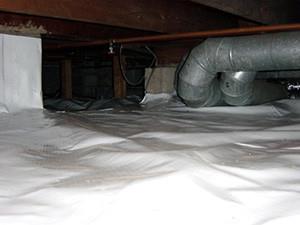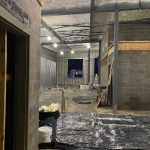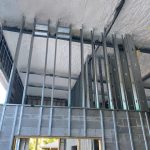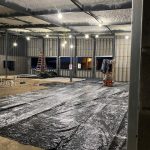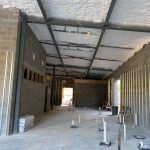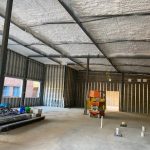- 927 Lee Road 268, Valley, AL
- (706) 773-9274
Vapor Barriers & Moisture Control
Vapor barriers, or – more accurately – vapor diffusion retarders, should be part of a moisture control strategy for a home in most U.S. climates. A vapor barrier or vapor diffusion retarder is a material that reduces the rate at which water vapor can move through a material. The older term “vapor barrier” is still used even though “vapor diffusion retarder” is more accurate.
Vapor barriers prevent water from entering the walls, floors and ceilings of a structure, preventing rot, mold and mildew.
Moisture in the walls is not just a problem because of the rot, mold and mildew issues.
In cold climates, having wet insulation can actually decrease the efficiency of the insulation, making the house colder and potentially raising heating bills.
The water can also freeze and then melt rapidly, creating water stains on the walls and ceilings. Chronic moisture can also cause the wood in a structure to warp, causing structural instability.
The level of moisture in the home is crucial to achieving a healthy home environment.
The signs that conditions of excessive moisture exist may be clearly visible or they may be hidden in places such as behind walls, under furniture and carpets, and in crawlspaces or attics.
In assessing moisture problems in the home environment, it is important to know such potential hiding places and visually inspect all areas that are reasonably accessible.
Preventing and eliminating moisture control problems involves removing, diverting, blocking, or otherwise controlling the source of moisture while also providing adequate ventilation.
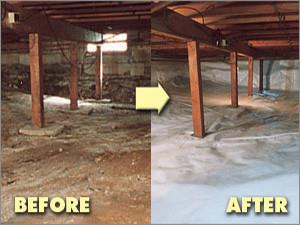
Make the jump to energy efficiency today!
Spray foam insulation is the best choice for energy efficient insulation in your new or existing home.
Call us today
Combination air barriers/vapor diffusion retarders
An air barrier/vapor diffusion retarder attempts to accomplish water vapor diffusion and air movement control with one material. This type of material is most appropriate for southern climates where keeping humid outdoor air from entering the building cavities is critical during the cooling season.
- In many cases, air barriers/vapor diffusion retarders consist of one or more of the following materials:
- Polyethylene plastic sheets
- Builder’s foil
- Foam board insulation
- Other exterior sheathings.
Air barriers/vapor diffusion retarders are generally placed around the perimeter of the building just under the exterior finish, or they may actually be the exterior finish. The key to making them work effectively is to permanently and carefully seal all of the seams and penetrations, including around windows, doors, electrical outlets, plumbing stacks, and vent fans.
Missed gaps of any size not only increase energy use, but also increase the risk of moisture damage to the house, especially during the cooling season. An air barrier/vapor diffusion retarder should also be carefully inspected after installation before other work covers it. If small holes are found, you can repair them with caulk or polyethylene or foil tape. Areas with larger holes or tears should be removed and replaced. Patches should always be large enough to cover the damage and overlap any adjacent wood framing.
